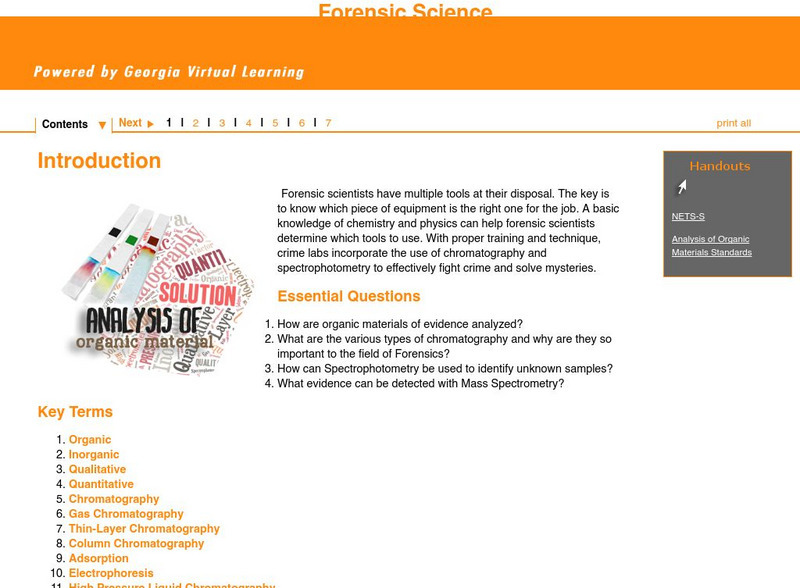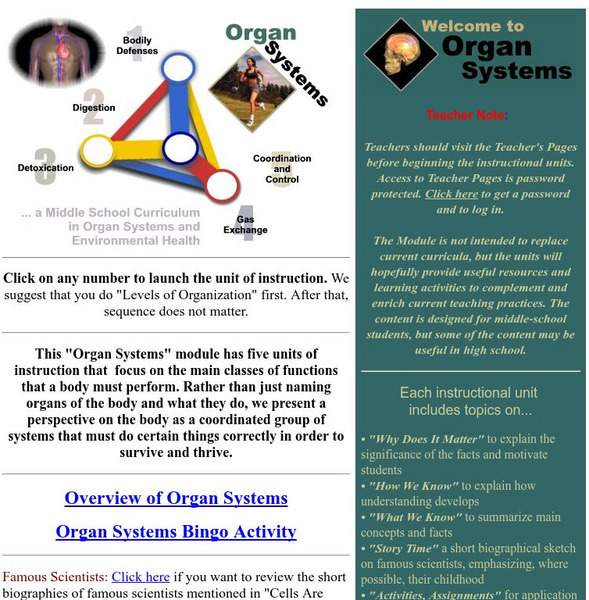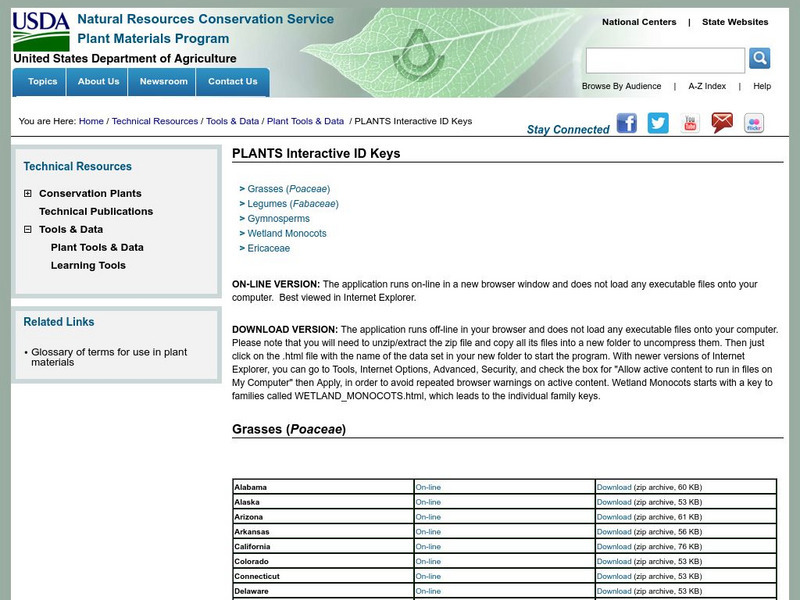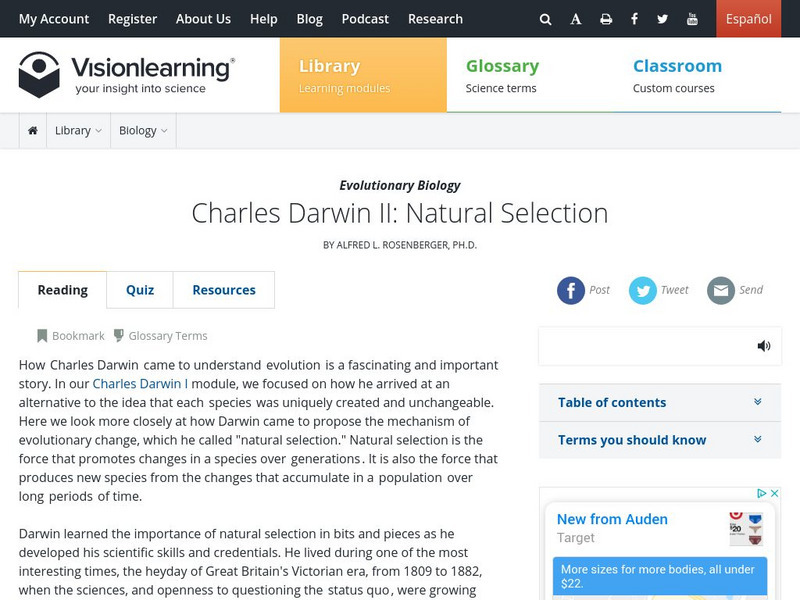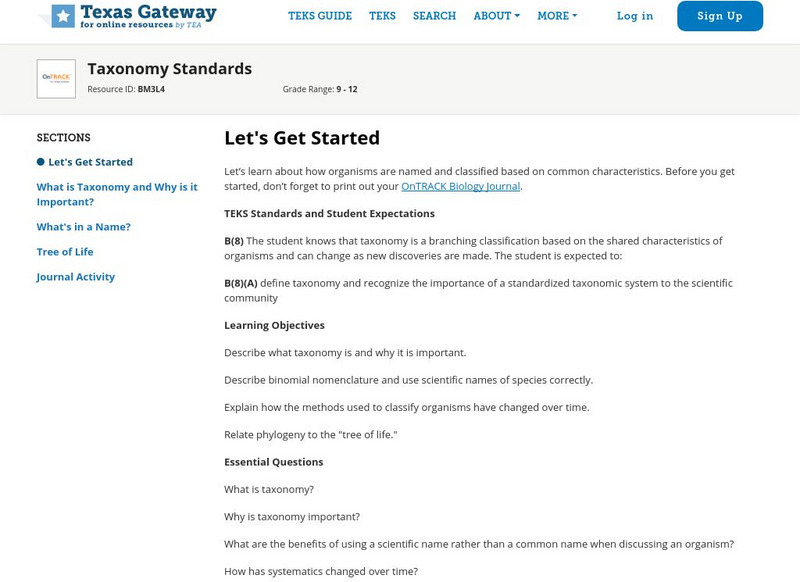Hi, what do you want to do?
Mind My Education
Mind My Education: The Life of Environments
This extensive lesson plan covers various topics about how animals interact with their environment. Topics include how animals sense their environment, how environments and organisms change together, and how animals use their senses to...
Annenberg Foundation
Annenberg Learner: Interactives: Periodic Table
Learn the basics of the Periodic Table including how the Periodic Table is organized and how to make sense of the information included in the table. Test your understanding with an interactive quiz at the end of the activity.
Texas Education Agency
Texas Gateway: Scientific Investigation and Reasoning Data Organization
Using interactive exercises, students will review how to construct tables and graphs in order to organize data.
Untamed Science
Untamed Science: Ecology: The Study of Interactions
Learn about how ecology is simply the study of how and why organisms interact with their environments.
Georgia Department of Education
Ga Virtual Learning: Analysis of Organic Materials Analysis of Organic Materialsv
This comprehensive interactive tutorial continues to explore the forensic science field. Learn how organic materials of evidence are analyzed and what the various types of chromatography are, especially why they are so important to this...
Texas A&M University
Peer Curricula: Organ Systems
This site gives five instructional units on organ systems: bodily defenses, digestion, detoxification, gas exchange, and coordination and control. Each unit is broken down into sections: "why does it matter," "how we know," "what we...
Howard Hughes Medical Institute
Hhmi: Bio Interactive: Explore Your Inner Animals
Did you know parts of our body was inherited from distant animal ancestors? In this interactive students will investigate different anatomical features of the human body to reveal our evolutionary history. Learn how humans share...
US Department of Agriculture
Us Department of Agriculture: Plants Interactive Id Keys
A database of information about plants across the United States and how to identify them. Covers grasses, legumes, gymnosperms, wetland monocots, and the Ericaceae flowering plants. The information is contained in downloadable zip files,...
Curated OER
Kids Health: How the Body Works
A colorful, interactive site for kids and teens. A holistic approach to learning about your body, including topics such as feelings, drugs, injuries, and other health issues. Available in Spanish.
Biology 4 kids
Biology4 Kids: Relationships Between Organisms
Species interact every day. That interaction is a vital part of how organisms develop and change over time. When you study species, it is important to watch the way they interact with their surroundings. There are four basic types of...
Wisconsin Response to Intervention Center
Wisconsin Rt I Center: Interactive Journals [Pdf]
Classroom teachers will learn about interactive vocabulary journals, engaging instructional strategy tools. They will learn how to implement interactive jounals, understand how to measure progress with interactive journals, find research...
Vision Learning
Visionlearning: Biology: Galapagos Finches
Interactive animation illustrates how Charles Darwin used his study of finch beaks to explain evolution. A phylogenetic tree diagram shows how the birds' color and beak shape changed over generations.
Vision Learning
Visionlearning: Biology: Charles Darwin Ii: Natural Selection
Instructional module focusing on Charles Darwin's explanation of natural selection as the mechanism for evolution. Discusses how this force of natural selection promotes changes in species over time. Site also includes an interactive...
US Geological Survey
Lake Pontchartrain Basin Foundation: Ecosystems in Delicate Balance
Learning activities to investigate how organisms interact in a functioning ecosystem. Students will explore the role organisms play in food chains and preserving biodiversity in ecosystems. Lake Pontchartrain Basin ecosystem is featured...
CK-12 Foundation
Ck 12: Life Science: 12.1 Ecology Overview
Discover how organisms interact in their environment.
Polk Brothers Foundation Center for Urban Education at DePaul University
Depaul University: Center for Urban Education: Evaluate Decisions [Pdf]
A nonfiction graphic organizer is available to help students evaluate decisions of people. Students will analyze how characters interact and develop throughout the course of a nonfiction text.
Biology 4 kids
Biology4 Kids: Skeletons Inside and Out
Explore the skeletal system. Identify the differences of the endoskeleton and exoskeleton, what the system does, how it interacts with other systems, and how it might vary genetically.
PBS
Pbs Learning Media: A Subsistence Culture Impacted by Climate Change
This short video explains how warmer temperatures in the Arctic are transforming the ecosystem and affecting the Athabaskan people, threatening their way of life. [2:59]
Vision Learning
Visionlearning: Biology: Adaptation: The Case of Penguins
Instructional module focusing on why species change over time through behavioral and physical adaptations. Discusses how environmental mechanisms influence adaptive evolution. Site also includes an interactive practice quiz and links...
TED Talks
Ted: Ted Ed: The Wild World of Carnivorous Plants
What exactly are carnivorous plants and how do they trap their prey? Kenny Coogan dives into the world of flesh-eating tricksters.
Texas Education Agency
Texas Gateway: Taxonomy Standards
What's in a name? Learn about how organisms are named and organized in this interactive tutorial.
E-learning for Kids
E Learning for Kids: Science: South Africa: How Do Organisms Get Their Energy?
Join Ellen on her trip to the Kaap De Goede Hoop in South Africa, and learn more about plants, animals, and energy.
Curated OER
Kids Health: How the Body Works Movies and Activities
Short, colorful movies explain each of the body's systems: skeletal, cardiovascular, digestive, urinary, respiratory, endocrine, skin, immune, muscular, and nervous. Once you've seen the movie, click on the Activity Page link for...
PBS
Pbs Teachers: Volcanoes of the Deep
Discuss how individual organisms and groups of organisms interact with each other, and research and classify symbiotic relationships between individual organisms of different species.








